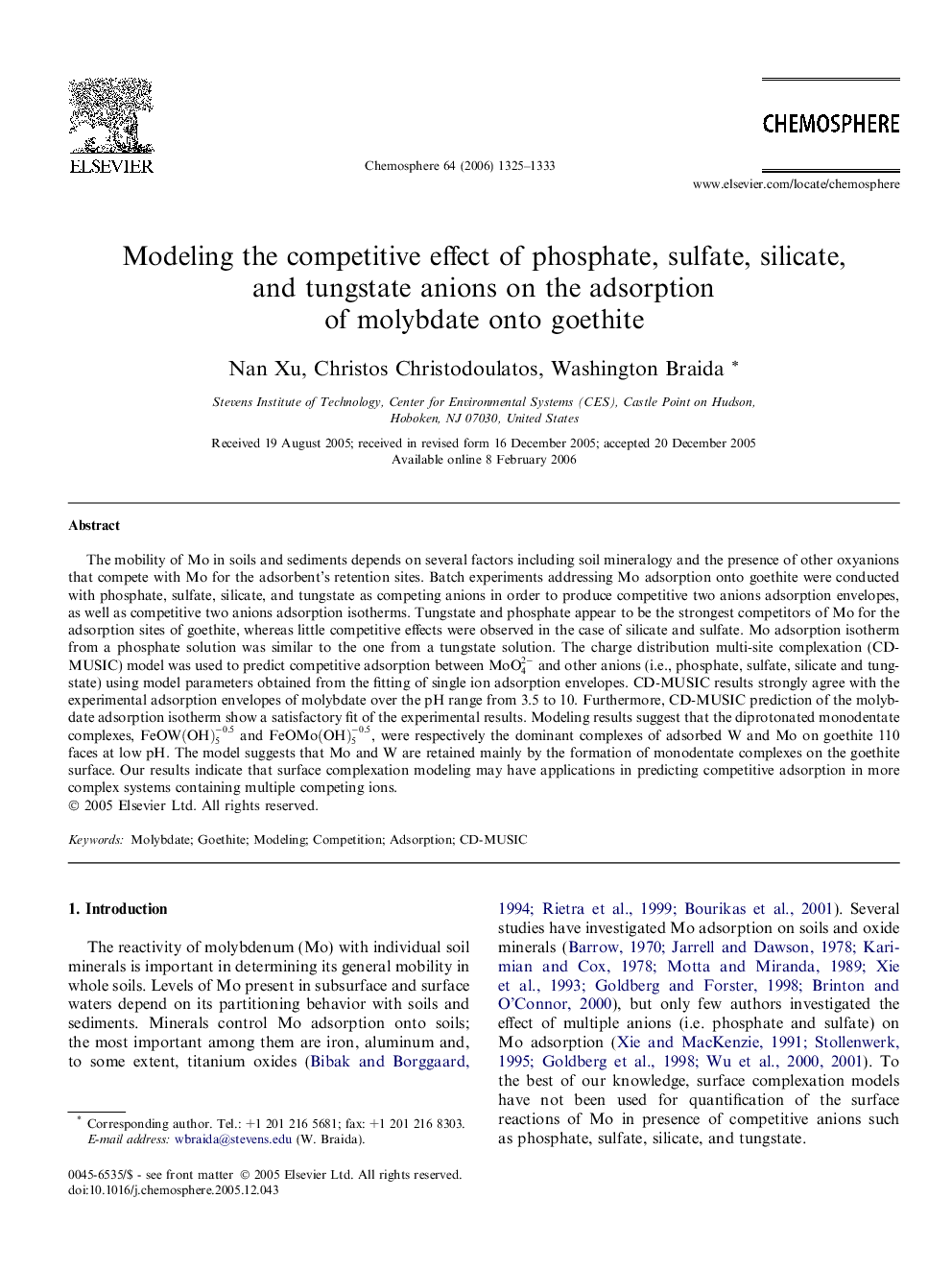| Article ID | Journal | Published Year | Pages | File Type |
|---|---|---|---|---|
| 4416091 | Chemosphere | 2006 | 9 Pages |
The mobility of Mo in soils and sediments depends on several factors including soil mineralogy and the presence of other oxyanions that compete with Mo for the adsorbent’s retention sites. Batch experiments addressing Mo adsorption onto goethite were conducted with phosphate, sulfate, silicate, and tungstate as competing anions in order to produce competitive two anions adsorption envelopes, as well as competitive two anions adsorption isotherms. Tungstate and phosphate appear to be the strongest competitors of Mo for the adsorption sites of goethite, whereas little competitive effects were observed in the case of silicate and sulfate. Mo adsorption isotherm from a phosphate solution was similar to the one from a tungstate solution. The charge distribution multi-site complexation (CD-MUSIC) model was used to predict competitive adsorption between MoO42- and other anions (i.e., phosphate, sulfate, silicate and tungstate) using model parameters obtained from the fitting of single ion adsorption envelopes. CD-MUSIC results strongly agree with the experimental adsorption envelopes of molybdate over the pH range from 3.5 to 10. Furthermore, CD-MUSIC prediction of the molybdate adsorption isotherm show a satisfactory fit of the experimental results. Modeling results suggest that the diprotonated monodentate complexes, FeOW(OH)5-0.5 and FeOMo(OH)5-0.5, were respectively the dominant complexes of adsorbed W and Mo on goethite 110 faces at low pH. The model suggests that Mo and W are retained mainly by the formation of monodentate complexes on the goethite surface. Our results indicate that surface complexation modeling may have applications in predicting competitive adsorption in more complex systems containing multiple competing ions.
